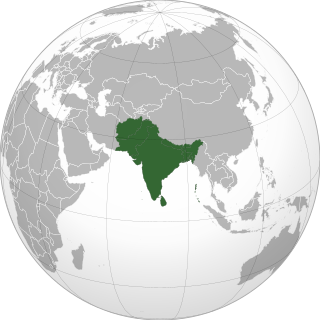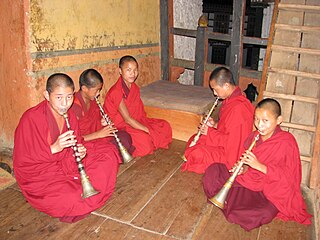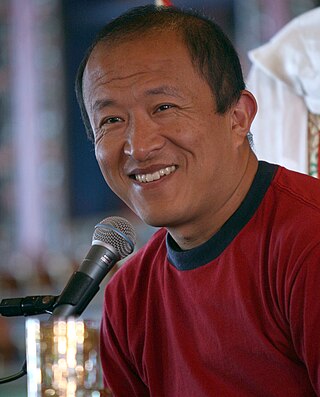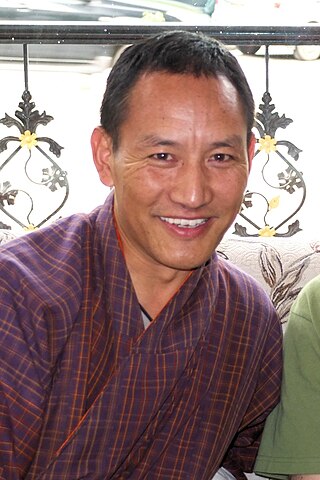
Bhutan's early history is steeped in mythology and remains obscure. Some of the structures provide evidence that the region has been settled as early as 2000 BC. According to a legend it was ruled by a Cooch-Behar king, Sangaldip, around the 7th century BC, but not much is known prior to the introduction of Tibetan Buddhism in the 9th century, when turmoil in Tibet forced many monks to flee to Bhutan. In the 12th century, the Drukpa Kagyupa school was established and remains the dominant form of Buddhism in Bhutan today. The country's political history is intimately tied to its religious history and relations among the various monastic schools and monasteries.

Thimphu is the capital and largest city of Bhutan. It is situated in the western central part of Bhutan, and the surrounding valley is one of Bhutan's dzongkhags, the Thimphu District. The ancient capital city of Punakha was replaced by Thimphu as capital in 1955, and in 1961 Thimphu was declared as the capital of the Kingdom of Bhutan by the 3rd Druk Gyalpo Jigme Dorji Wangchuck.

Cradled in the folds of the Himalayas, Bhutan has relied on its geographical isolation to protect itself from outside cultural influences. A sparsely populated country bordered by India to the south, and China to the north, Bhutan has long maintained a policy of strict isolationism, both culturally and economically, with the goal of preserving its cultural heritage and independence. Only in the last decades of the 20th century were foreigners allowed to visit the country, and only then in limited numbers. In this way, Bhutan has successfully preserved many aspects of its culture, which dates directly back to the mid-17th century.

The national flag of Bhutan is one of the national symbols of Bhutan. The flag features a Chinese dragon from Bhutanese mythology. This alludes to the Dzongkha name of Bhutan – Druk Yul – as well as the Drukpa Lineage of Tibetan Buddhism, which is the dominant religion of Bhutan.

The music of Bhutan is an integral part of its culture and plays a leading role in transmitting social values. Traditional Bhutanese music includes a spectrum of subgenres, ranging from folk to religious song and music. Some genres of traditional Bhutanese music intertwine vocals, instrumentation, and theatre and dance, while others are mainly vocal or instrumental. The much older traditional genres are distinguished from modern popular music such as rigsar.

Travellers and Magicians is a 2003 Bhutanese Dzongkha-language film written and directed by Khyentse Norbu, writer and director of the arthouse film The Cup. The movie is the first feature film shot entirely in the Kingdom of Bhutan. The majority of the cast are not professional actors; Tshewang Dendup, a well-known Bhutanese radio actor and producer, is the exception.

Zhabdrung was a title used when referring to or addressing great lamas in Tibet, particularly those who held a hereditary lineage. In Bhutan the title almost always refers to Ngawang Namgyal (1594–1651), the founder of the Bhutanese state, or one of his successive reincarnations.

Dzongsar Jamyang Khyentse Rinpoche, also known as Khyentse Norbu, is a Tibetan/Bhutanese lama, filmmaker, and writer. His four major films are The Cup (1999), Travellers and Magicians (2003), Vara: A Blessing (2013), and Hema Hema: Sing Me a Song While I Wait (2017). He is the author of What Makes You Not a Buddhist (2007) and many other non-fiction works about Tibetan Buddhism.
Zhungdra is one of two main styles of traditional Bhutanese folk music, the other being bödra. Arising in the 17th century, zhungdra is an entirely endemic Bhutanese style associated with the folk music of the central valleys of Paro, Thimphu, and Punakha, the heart of the Ngalop cultural area. Bödra, in contrast, evolved out of Tibetan court music.
Rigsar is a music genre, the dominant type of popular music of Bhutan. It was originally played on a dranyen, and dates back to the late 1960s. The first rigsar song, Zhendi Migo was a copy of the popular Bollywood filmi song "Sayonara" from the film Love in Tokyo. Rigsar songs can be in several languages, including the Tshangla (Sharchopkha) language.

The official religion in Bhutan is Buddhism, which is practiced by between 73-85% of the population;

A tshechu is any of the annual religious Bhutanese festivals held in each district or dzongkhag of Bhutan on the tenth day of a month of the lunar Tibetan calendar. The month depends on the place. Tshechus are religious festivals of the Drukpa Lineage of the Kagyu school of Tibetan Buddhism.

The dramyin or dranyen is a traditional Himalayan folk music lute with six strings, used primarily as an accompaniment to singing in the Drukpa Buddhist culture and society in Bhutan, as well as in Tibet, Ladakh, Sikkim and Himalayan West Bengal. It is often used in religious festivals of Tibetan Buddhism. The instrument is played by strumming, fingerpicking or plucking. The dramyen, chiwang (fiddle), and lingm (flute) comprise the basic instrumental inventory for traditional Bhutanese folk music.
The national symbols of Bhutan include the national flag, national emblem, national anthem, and the mythical druk thunder featured in all three. Other distinctive symbols of Bhutan and its dominant Ngalop culture include Dzongkha, the national language; the Bhutanese monarchy; and the driglam namzha, a seventeenth-century code on dress, etiquette, and dzong architecture. Natural symbols of Bhutan are its national flower, the Himalayan blue poppy; its national tree, the Himalayan cypress; its national bird, the raven; and its national animal, the takin.
Public holidays in Bhutan consist of both national holidays and local festivals or tshechus. While national holidays are observed throughout Bhutan, tsechus are only observed in their areas. Bhutan uses its own calendar, a variant of the lunisolar Tibetan calendar. Because it is a lunisolar calendar, dates of some national holidays and most tshechus change from year to year. For example, the new year, Losar, generally falls between February and March.
The Royal Academy of Performing Arts (RAPA) is a Bhutanese government body within the Ministry of Home and Cultural Affairs, Department of Culture, that supports the preservation of traditional Bhutanese culture. It was founded in 1954 under the initiative of the Third Druk Gyalpo Jigme Dorji Wangchuck. In 1967, it was institutionalised as an academy and the Royal Dance troupe was its creation. The Academy is located in Thimphu, along Chhophel Lam.

Lopen Karma Phuntsho is a former monk and Bhutanese scholar who specialises in Buddhism, Tibetan & Himalayan Studies and Bhutan, and has published a number of works including eight books, translations, book reviews and articles on Buddhism, Bhutan and Tibetan Studies. His The History of Bhutan has been called "the first book to offer a comprehensive history of Bhutan in English" and received Choice Outstanding Academic Title Award in 2015.

The cinema of Bhutan is a small but emerging industry, having started in the mid-1990s. It has since been supported by government officials and different businesses.
Pawo Choyning Dorji Druk Thuksey, recipient of the Heart Son of the Thunder Dragon, is a Bhutanese filmmaker and photographer. His feature directorial debut Lunana: A Yak in the Classroom (2019) was nominated for Best International Feature Film at the 94th Academy Awards. He is the youngest recipient of Bhutan’s highest civilian award, the Druk Thuksey, the Heart Son of the Thunder Dragon. It was bestowed to him by King Jigme Khesar Namgyel Wangchuck. He is a member of the Academy of Motion Picture Arts and Sciences.













